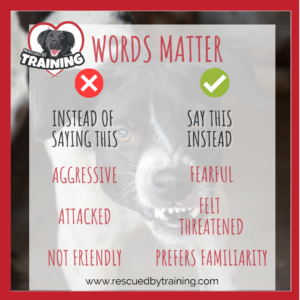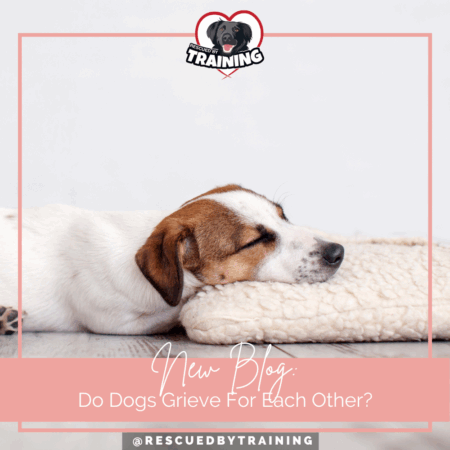As someone who specializes in fear and aggression cases, I get a lot of people trying to communicate their dog’s issue and use very colorful language. Over time I’ve learned to temper their interpretations and try to get them to focus on observations, not extrapolations of what they think is going on. Not only are colorful interpretations not terribly helpful from a training perspective but using negative or scary language about your dog colors how you see them. Instead of saying “my dog is aggressive,” tell me “my dog growls at me when I try to remove a bone from him.” The latter is much more informative, helpful and leaves little room for interpretation or misunderstanding.
Words are powerful and they always have emotion behind them. The words you choose describe and express your emotions to others and repeated over and over, they begin to deepen those feelings and can even become what we experience.
Think about your human relationships. If you have someone in your life who makes a mistake or wrongs you, and then you start to harp on that thing and talk about it all the time, you’re much more likely to begin to see that person in a much more negative light than if you looked for positives that person brings to your life. You’d much more quickly move towards forgiveness, understanding and move on from whatever wronged you. The same applies to your dog.
I get it. Living with a reactive or otherwise difficult dog is hard. It’s hard emotionally. It’s hard to schedule things. Maybe you’re even scared. You may blame your dog for missing out on things or for not being “normal.” That’s all understandable. But, if your goal is to help your dog, using words like aggressive, attacked, vicious, ferocious, jealous, angry or manipulative will not help you help your dog.
If you tell someone “my dog is aggressive”, they immediately assume the dog is dangerous and not a friendly dog. It colors how that person, without even having met your dog, now sees your dog and what they expect, based on that person’s individual experience of what an “aggressive dog” is, to them. And, this affects how you see your dog too. If instead, you said “my dog is fearful and is afraid of new people,” it communicates understanding and empathy. As humans, we have a hard time seeing dogs who are growling, lunging or biting as scared, but they are. Dogs are animals with powerful jaws and sharp teeth and that is scary to humans. It’s supposed to be! But when a dog is threatened and afraid (even if we don’t understand why they’re afraid), they communicate the only way they know how – through body language. And often that means, barking, growling, lunging or biting. Aggressive dogs are scared dogs. They’re not trying to dominate you or show you who is in charge. They’re afraid and the only way they know how to get some relief is to aggress towards the thing that is scaring them.
Also, when we tread into interpretations of what or why the dog is doing something instead of clear observations, that leaves a lot of room for extrapolation. Chances are very high that when you say “attacked,” you and I have a very different definitions of that word. Same with aggressive or ferocious. These words are strong and when someone uses them, it’s with the intent to convey negativity. But in my book, dog bite doesn’t automatically equate dog attack.
Often someone tells me their dog attacked someone and my first question is always “what were the injuries sustained and what level of medical care did the person receive?” More often than not, the answer is a long pause and then “oh, it didn’t require medical care.” My friends, that isn’t an attack. Even a bite that requires antibiotics or sutures or some medical intervention doesn’t automatically warrant an attack. What’s an attack to animal professionals? Well, luckily we have a standardized scale for measuring bite severity and inhibition: The Dunbar Bite Scale. To me (and most professionals), I’d be hard pressed to call something an attack that wasn’t at least a Level 5 bite. Anything less than that, is simply, a dog bite. Of course nobody likes to be the victim of a dog bite. But, dogs bite. And, any dog can bite. It’s completely normal, species appropriate behavior.
So as you describe your dog’s behavior, I encourage you to use words that will help others understand what makes your dog struggle and language that will make you, and others, empathetic to your dog.

If you are struggling with any behavior issues, please reach out for help. See all of my service offerings here.
Happy training!
![]()





